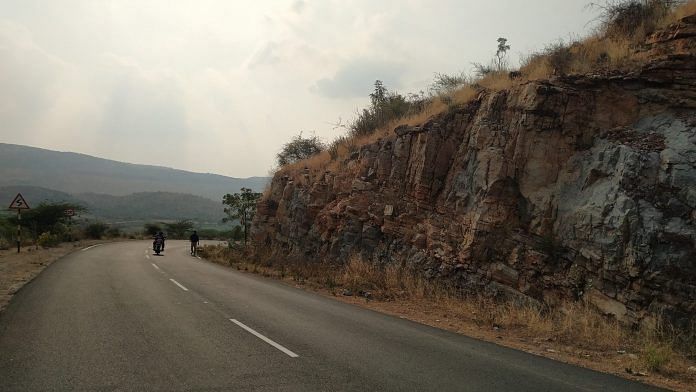New Delhi: “The story of our planet is written in the different strata of rocks,” says scientist Prosenjit Ghosh, who has authored a study on how the Earth looked about two billion years ago, when the planet’s atmosphere was being oxygenated.
Ghosh, professor at the Centre for Earth Science (CEaS), Indian Institute of Science (IISc), co-authored the study published in Chemical Geology, which found how conditions during that time — called the Palaeoproterozoic era — provided just the right ambience for the emergence of photosynthetic algae.
These algae were mainly responsible for pumping oxygen into the atmosphere, and making way for other life forms to evolve and populate the planet.
By analysing ancient dolomite (carbonate) deposits found in Vempalle, in the Cuddapah district of Andhra Pradesh, researchers at IISc and the University of Tennessee estimated the temperature and composition of a shallow, inland sea that most likely existed back in that time.
Their findings also shows how a wealth of data about our planet’s past remains inside ancient rocks.
The study says life in Earth has not always been hospital, but has been through different phases of climatic extremes, including periods when carbon dioxide levels were almost too toxic for living creatures, just like in Venus.
However, various studies of fossils from the Palaeoproterozoic era show that some life might have existed even under these harsh conditions.
The large amounts of carbon dioxide in the atmosphere were absorbed by the sea and trapped as carbonates in dolomites, says Yogaraj Banerjee, a former PhD student from CEaS and one of the authors.
“[Dolomite] is a direct precipitate from seawater. It provides a signal not only of seawater chemistry but also of seawater temperature,” explains Robert Riding, Research Professor at the Department of Earth and Planetary Sciences, University of Tennessee, USA, and another author of the study.
The team of researchers collected dolomite samples from chert – hard rocks formed by the interaction of microbes with seawater – as well as deposits underneath them called dolomitic lime-mud.
Having first identified the strata of rock where the dolomitic mud could be found, the researchers extracted and transported them back to the lab. Then, they used a state-of-the-art technique known as clumped isotope thermometry to analyse the mud. The technique allows scientists to narrow down the temperature and composition of the deposits by looking at the arrangement of the carbon and oxygen bonds.
After two years of analysis, the team was able to figure out from the dolomitic mud that the temperature of the seawater during its original time period was about 20°C. This is in contrast to previous studies that analysed only chert samples from around the same period, and had estimated that the temperature was higher, around 50°C. The lower temperature estimate from the current study agrees more closely with the theory that the conditions were ideal for supporting life forms.
During the Palaeoproterozoic era, the type of water present was earlier believed to be only heavy water, containing a specific set of isotopes or forms of hydrogen. However, in the current study, the team showed that light water – the regular form of water found even today – was also present back then.
These insights – the lower seawater temperature and the presence of light water –support the hypothesis that conditions around two billion years ago were just right for photosynthetic algae to emerge.
The team now plans to search for similar lime-mud deposits in other places around the world to gather additional insights about the Palaeoproterozoic era.
Also read: IIT Roorkee works towards improving earthquake warning time to 40 seconds or more






